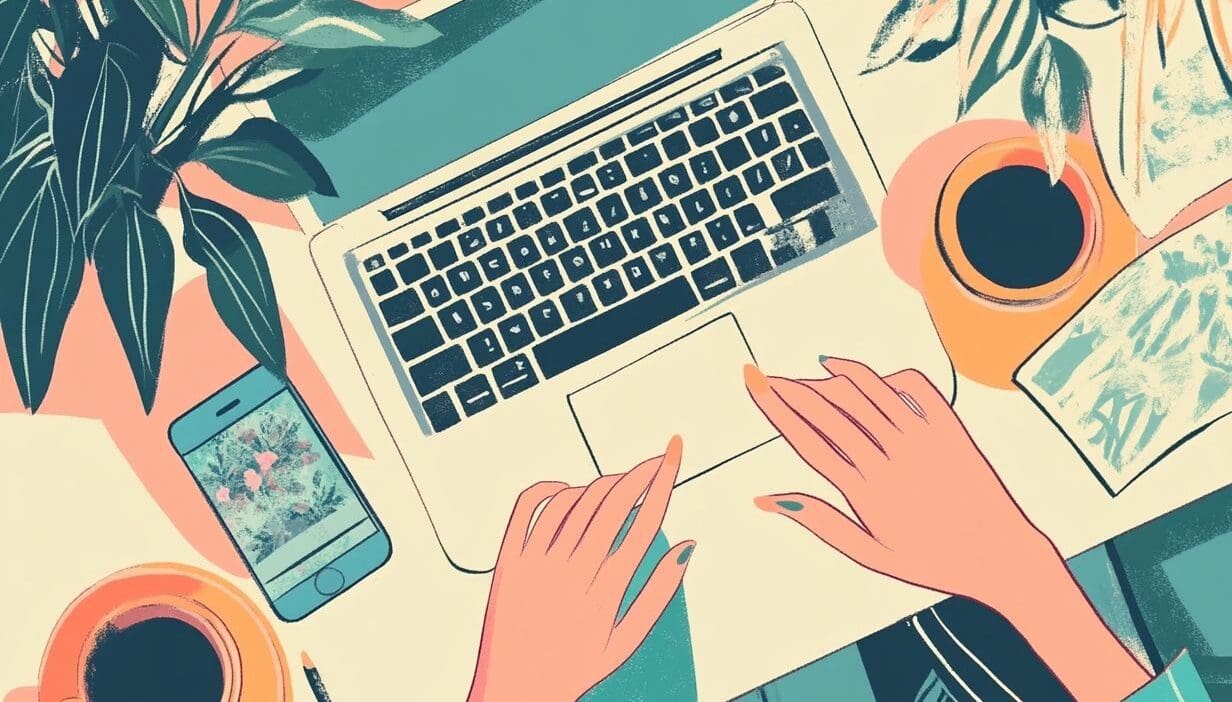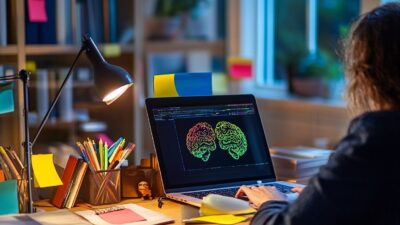In today’s rapidly evolving digital landscape, digital distractions are pervasive, posing significant threats to productivity and mental well-being. From social media notifications to constant alerts, these interruptions can undermine concentration and foster a cycle of stress. This article examines the effects of digital distractions and presents practical strategies for identifying and managing digital overload effectively. Establishing boundaries, practicing mindfulness, and cultivating healthy habits can substantially enhance one’s relationship with technology, resulting in improved focus and overall mental health.
Key Takeaways:
The Impact of Digital Distractions

Digital distractions are prevalent in today’s hyper-connected environment, significantly affecting individuals’ capacity to concentrate on work and academic pursuits, often requiring the use of concentration techniques.
The incessant flow of notifications from productivity applications, social media platforms, and emails frequently results in diminished deep concentration and heightened stress levels.
Research from Mass General indicates that digital distraction can have adverse effects on mental health, contributing to feelings of anxiety and frustration as individuals strive to manage their time efficiently using time-tracking apps and other productivity strategies (Mass General, 2023).
As individuals engage with their daily responsibilities, it is essential to recognize the influence of these distractions on productivity in order to promote healthier technology habits and enhance overall well-being.
Effects on Productivity and Mental Health
The impact of digital distractions on productivity and mental health is profound, often resulting in procrastination and ineffective learning strategies.
With the proliferation of technology, interruptions from notifications and social media have become ubiquitous, fostering an environment where maintaining concentration on tasks is increasingly difficult. Experts such as Elizabeth Grace Saunders have emphasized that these distractions can disrupt not only individual productivity but also broader task management, contributing to anxiety and feelings of being overwhelmed.
A study conducted by McKinsey & Company indicated that over 60% of knowledge workers reported dedicating approximately 28% of their workweek to managing irrelevant communications and distractions. This statistic underscores how digital interruptions can adversely affect emotional well-being and overall job satisfaction.
Addressing these challenges necessitates deliberate efforts to minimize distractions and implement effective time management and emotional regulation strategies, often with the help of tools like focus reminders and goal-setting apps. Some experts at SAP suggest incorporating these strategies to enhance focus and productivity in the workplace.
Identifying Your Personal Digital Distractions
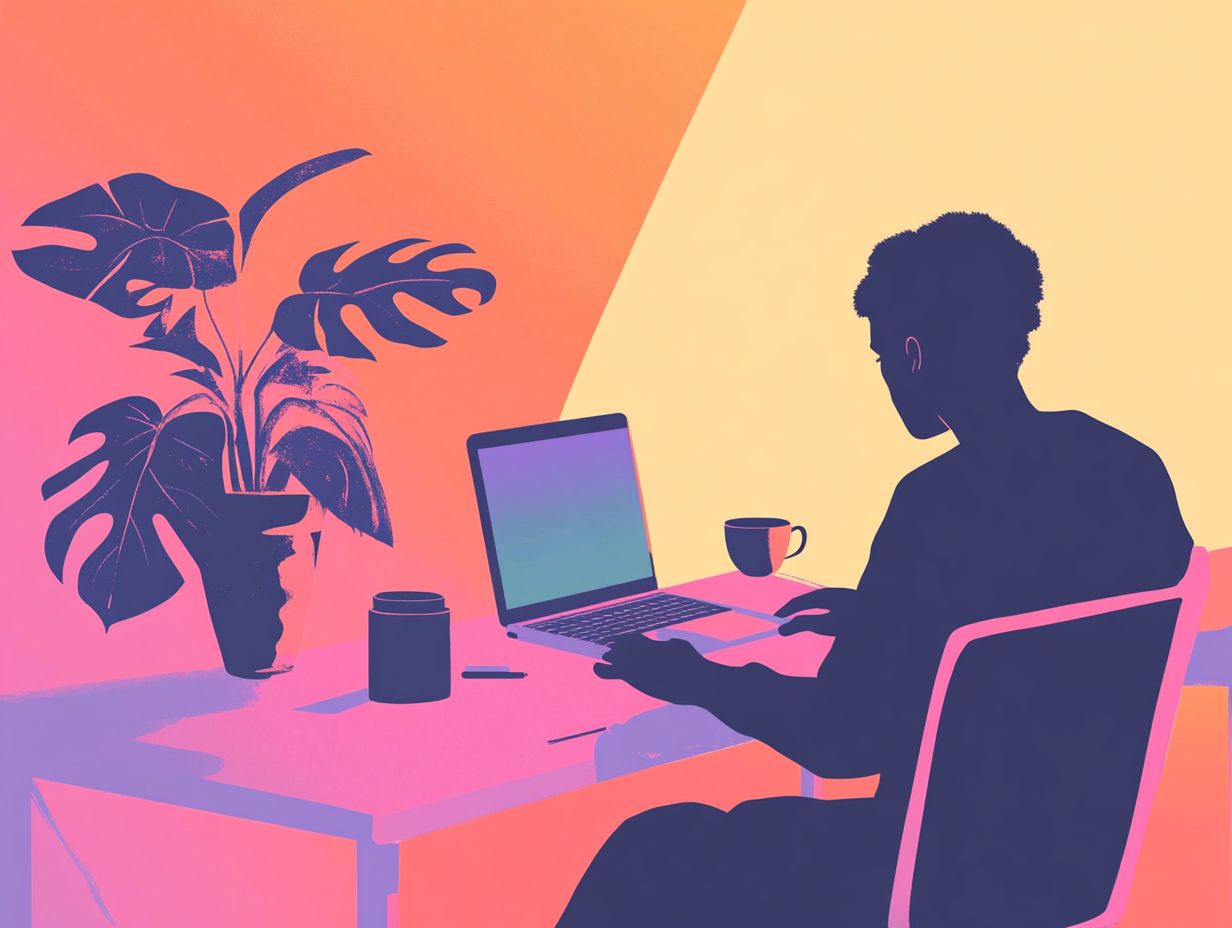
Identifying personal digital distractions is essential for enhancing focus and productivity, as these distractions frequently arise from technology habits and common environmental triggers, which can be managed with effective study tips.
Many individuals encounter difficulties due to pervasive distractions, such as social media notifications, which can significantly disrupt time management efforts and impede progress toward personal goals. A recent publication by ScienceDirect delves into the determinants of digital distraction, offering insight into these pervasive challenges.
By acknowledging these time-wasting factors, individuals can implement more effective distraction management strategies, ultimately leading to improved focus and productivity.
Common Triggers and Time Wasters
Common triggers of digital distractions include notifications from social media, email, and various productivity applications, all of which can disrupt concentration and contribute to procrastination, hindering effective learning.
These persistent alerts can create a considerable impulse to check for updates, diverting attention from critical tasks. For example, a single notification from a messaging application can disrupt an individual’s focus, resulting in the loss of several productive minutes or even hours.
To address this issue, one effective strategy is to turn notifications off, thereby enabling individuals to establish periods of focused work and utilize time blocks for better productivity.
Employing email management techniques, such as designating specific times to check emails or utilizing tools that prioritize emails based on urgency, can further enhance time management.
The implementation of these strategies can lead to a significant improvement in productivity and a reduction in time spent on digital distractions.
Strategies for Overcoming Digital Distractions
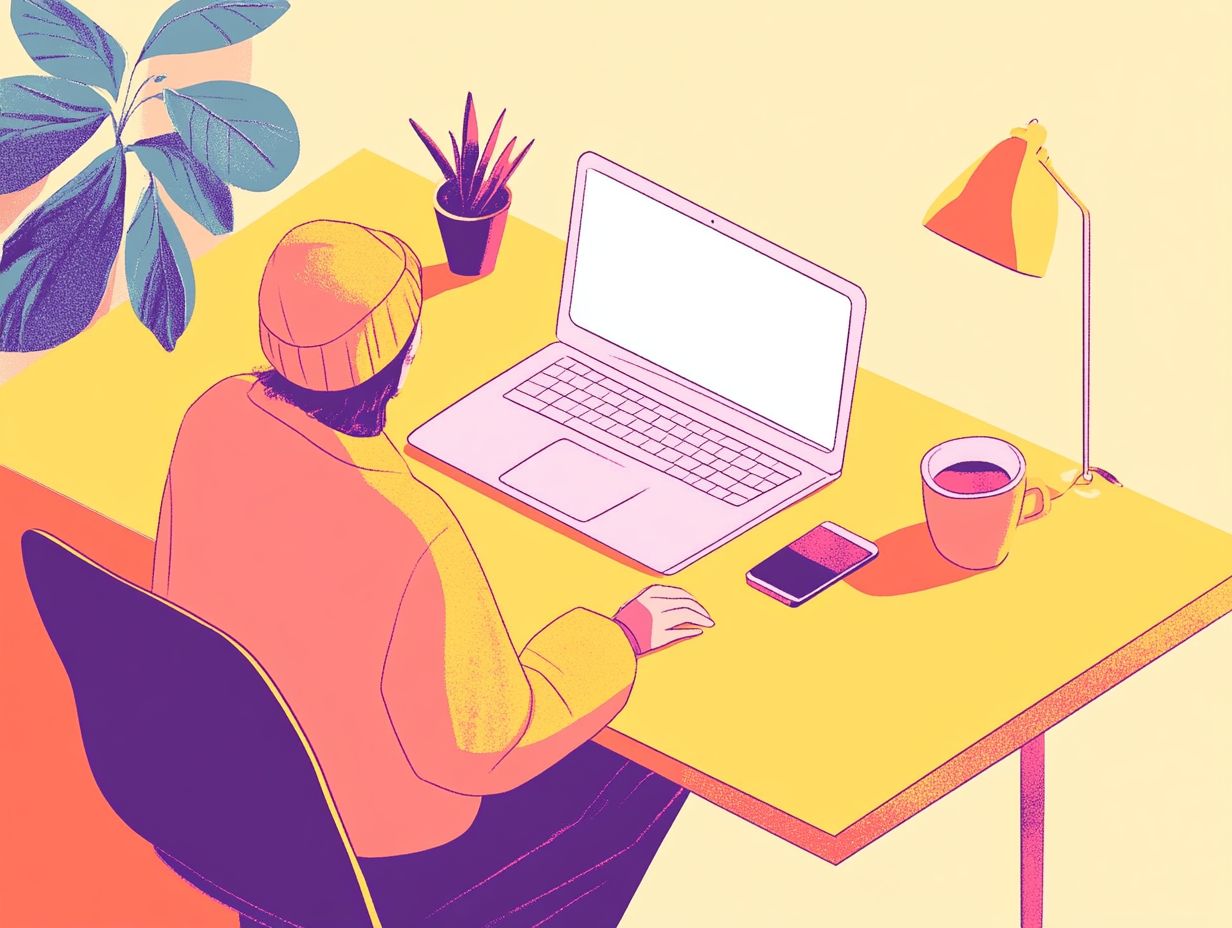
Overcoming digital distractions necessitates a comprehensive approach that incorporates effective distraction management and the implementation of focus techniques tailored to individual requirements, such as the Pomodoro Technique.
Strategies such as:
- Employing a mindfulness bell to indicate focus periods,
- Utilizing task management tools such as time-tracking applications,
- Establishing designated planning times
can significantly enhance concentration and productivity. By cultivating healthier technology habits, individuals can create a distraction-free environment conducive to successful writing or study outcomes.
Setting Boundaries and Creating a Distraction-Free Environment
Setting boundaries is essential for creating a distraction-free environment, which enables individuals to maintain focus and enhance productivity.
Establishing both physical and emotional boundaries, such as using noise-cancelling headphones, can significantly improve an individual’s ability to concentrate on tasks. For instance, utilizing noise-cancelling headphones can effectively eliminate background noise, creating a calm atmosphere that is conducive to work and supporting effective study habits. Additionally, employing specific writing applications such as the Forest App, designed to minimize distractions, can help keep one’s mind focused on the task at hand.
Optimizing the study space is equally important, as a well-organized and clutter-free area can substantially enhance mental clarity. Furthermore, incorporating focus reminders, such as setting timers or utilizing mobile applications that prompt breaks, can assist individuals in sustaining their attention and managing their time more efficiently.
Practicing Mindfulness and Time Management Techniques
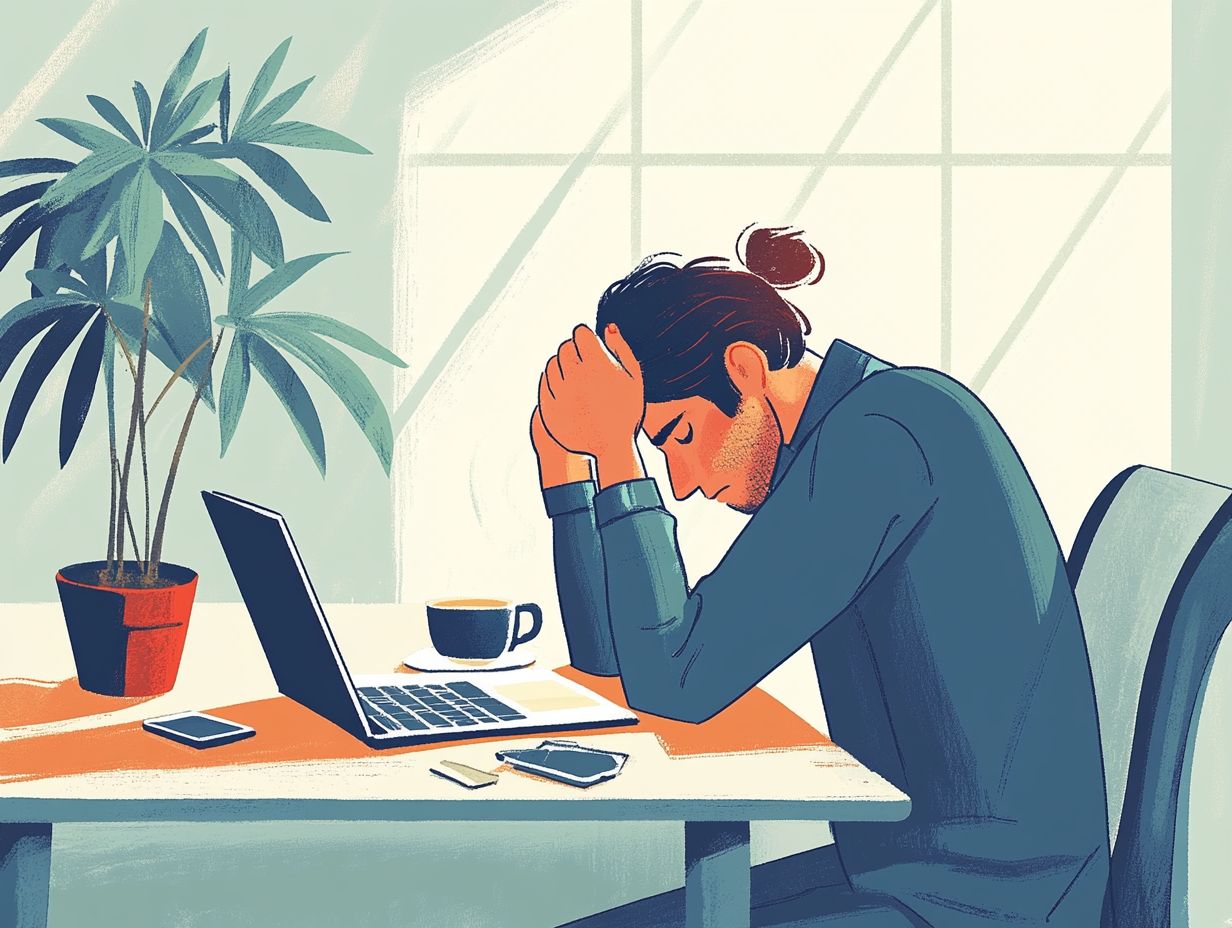
Practicing mindfulness in conjunction with effective time management techniques can significantly enhance an individual’s ability to concentrate on tasks and improve overall productivity.
By incorporating practices such as meditation and utilizing goal-setting applications like Toodledo or Workflowy, individuals can develop a heightened sense of awareness and control over their daily routines. These methodologies facilitate clearer prioritization of tasks, ensuring that energy is focused on the most impactful activities.
For example, commencing the day with a brief mindfulness session can help clarify goals and intentions, while a task management application can serve as a digital reminder of these priorities.
To integrate these techniques effectively, individuals may allocate specific time slots for meditation throughout the week, in addition to conducting regular check-ins with their goal-setting tools, thereby ensuring a seamless integration of mindfulness and productivity.
Creating a Sustainable Plan for Managing Digital Distractions
Developing a sustainable strategy for managing digital distractions requires the integration of emotional regulation and the establishment of coping mechanisms like communication preferences that are consistent with individual technology usage patterns.
Establishing Healthy Habits and Accountability
Establishing healthy habits is essential for effective management of distractions, and having an accountability partner can significantly enhance one’s commitment to personal goals.
Utilizing goal-setting applications, along with an accountability partner, can further strengthen this commitment by enabling individuals to track their progress in real-time, thereby assisting them in maintaining focus and motivation. These digital tools not only offer reminders and facilitate progress tracking but also promote a sense of community among users.
Engaging with peers or mentors who share similar objectives can foster an encouraging environment where individuals feel supported and motivated to achieve success.
Additionally, developing strategies such as setting specific, measurable targets and eliminating unnecessary technological distractions can play a crucial role in sustaining these habits over time, ultimately leading to a more balanced lifestyle.
The Benefits of Reducing Digital Distractions
Reducing digital distractions offers several advantages, including enhanced focus, improved productivity, and better mental well-being, which are crucial for effective learning.
These factors collectively contribute to more effective learning outcomes.
Improved Focus, Productivity, and Mental Well-Being
Improving focus, productivity, and mental well-being is attainable through deliberate efforts to eliminate digital distractions from one’s study environment.
For instance, a study conducted by the American Psychological Association revealed that participants who restricted their smartphone usage during study sessions experienced a 20% increase in task completion rates, showcasing the importance of metacognition in improving study outcomes. Expert recommendations frequently underscore the importance of creating dedicated spaces devoid of notifications, as this strategy enables individuals to maintain engagement in their tasks for extended periods. This approach is particularly crucial for students who often manage multiple responsibilities.
Environments free from interruptions have been associated with enhanced cognitive function and information retention, indicating that even brief breaks from technology can significantly improve overall performance.
When individuals commit to minimizing digital distractions, using productivity apps and browser extensions like Stay Focused and Mac Freedom, they frequently discover an enhancement in their concentration through focus reminders and emotional management, which ultimately leads to higher-quality work, greater satisfaction with their productivity, and effective distractions management, often utilizing the Pomodoro Technique or online class tools.
